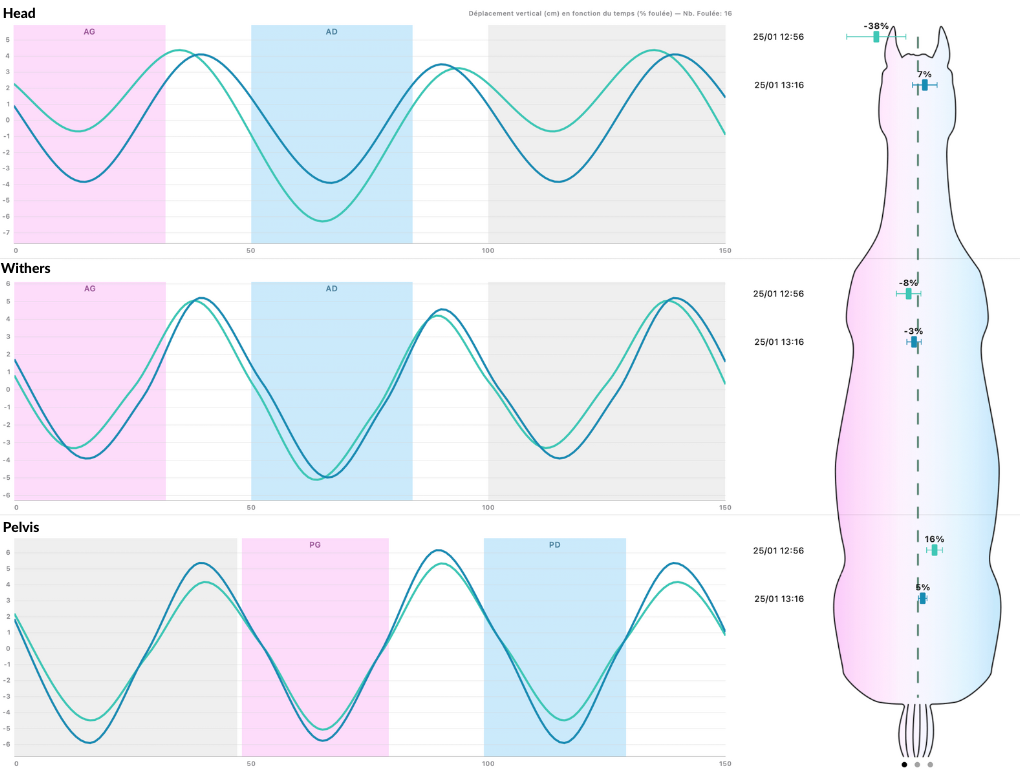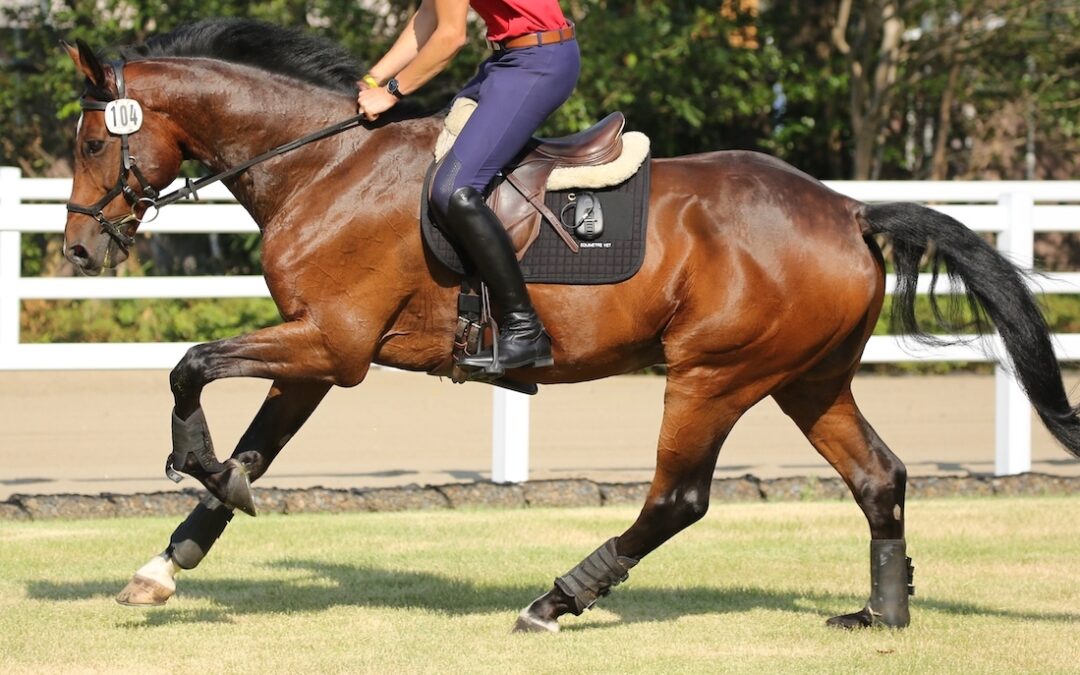The mounted veterinary exam plays a key role in assessing the health and well-being of equine athletes. It ensures the optimal management of the horses’ physical condition and helps prevent potential health problems. In addition to traditional medicine, these examinations enable veterinarians to assess the overall health of the horse during its activity, with a focus on locomotion, respiration, the cardiovascular system, and the musculoskeletal system.
What is a mounted examination? What are its advantages? And how is it performed?
What is the mounted veterinary examination?
The mounted veterinary examination is an additional examination conducted by a veterinarian in addition to the traditional examination of a horse. The veterinarian observes the horse while it is standing still or in its stall, and then examines it while it’s walking, trotting, and sometimes cantering on a lunge line. The mounted examination has been added to the veterinary examination for several years because many horses may have very subtle discomforts, and it is important to assess them under saddle for more objectivity. This examination assesses the health and performance of a horse in movement — trot, canter, transitions, and jumps. It can be performed as part of a pre-purchase examination or as an additional examination alongside the traditional veterinary check-up.
The main objective of the mounted examination is to identify any health problems – signs of injuries or discomfort – that may not be detectable while the horse is at rest or at lunge. There are numerous potential health issues that can be revealed through this examination, such as locomotor problems, upper or lower respiratory tract issues, or a lack of fitness. With the help of this examination, veterinarians can provide appropriate recommendations to ensure the well-being and optimise the performance of equine athletes.
Why performed a mounted veterinary examination?
The mounted veterinary examination has several key purposes. It aims to detect potential health issues and plays a key role in assessing the athletic ability of horses. By observing their locomotion, breathing and response to exercise. Veterinarians can assess their overall physical condition. It helps to determine whether the horse is capable of maintaining an adequate level of performance and meeting the requirements of its discipline and sport level.
This examination also has an adds value in the prevention of injuries by identifying elements such as muscular imbalances, joint anomalies or mobility limitations. Under saddle, the veterinarian can observe asymmetries that the horse may not have exhibited previously. He also pays close attention to the rider’s feedback and their perception of their horse’s functioning.
Some issues, such as lameness, can be amplified or more easily during the mounted examination. Locomotor asymmetries, irregularities or anomalies are indicators of locomotor issues. The use of a locomotion quantification tool – such as EQUISYM – during a mounted examination can be particularly useful.
Mounted examination – of a ” sound ” horse – with EQUISYM

Context
The visual above compares the locomotion of Arionea – a dressage mare – in a straight line on soft ground. The green curves and indices correspond to the straight line in hand trot, and those in blue correspond to the mounted exercise.
What does the data indicate?
- For the head: significant reduction of the amplitude of elevation (effect of the bridle).
- For the withers: slight improvement of the asymmetry, with the RF loading more pronounced.
- For the pelvis: increased amplitude of elevation and a slight improvement of asymmetry (vertical propulsion RH), probably caused by the rider’s action through his legs.
Mounted veterinary examination: how to proceed?
During the mounted equine veterinary examination, several parameters are examined to assess the horse’s overall health. First, the horse’s locomotion is closely observed: stride length of movement, symmetry and regularity of stride. Abnormal gait, lameness or asymmetry may indicate musculoskeletal problems.
The flexibility and elasticity of the joints are also evaluated through the smoothness of limb movements, potential signs of stiffness, or joint restriction. Decreased flexibility can be a sign of joint issues or muscle tension.
The veterinarian also observes the horse’s ability to maintain a regular heart rate during exercise, as well as its breathing. Respiratory abnormalities or cardiac irregularities can indicate cardiovascular problems.
-
- Broadly speaking, the mounted veterinary examination can be divided into three stages:
The “static” examination during which the horse is observed without any equipment. The vet can then check if the saddle fits properly on the horse’s back, without any fitting anomalies, and if it suits both the horse and the rider. This initial part of the examination is conducted at a walk, with loose reins, to observe the symmetry of movement involving the tail, back, limbs,.. - In the second part of the examination, the horse is asked to move at a walk and then at a trot, this time with semi-loose reins to allow the horse to maintain its natural balance. This helps to determine if the horse will self-compensate for any anomalies.
- The third and final part of the examination involves working the horse in place, at a trot and then at a canter, with a certain stride frequency, to observe its acceptance of different requested movements. The horse may also be put in more demanding situations to better identify the source of the problem.
- Broadly speaking, the mounted veterinary examination can be divided into three stages:
The vet may also examine other aspects of the horse’s health before or after the mounted examination. This may include palpation of muscles and tissues to detect any pain or tension, cardiac and pulmonary auscultation, as well as evaluating the horse’s reaction to various elements in its environment that could affect it, such as the rider’s aids or potential obstacles.
To assist in the diagnosis, the vet can use tools such as EQUIMETRE to measure heart rate and heart rhythm (ECG) at full speed and simultaneously record the cardiac, locomotor and GPS data of each horse at work. EQUIMETRE can also be used as part of a exercise test. Other veterinary tools, such as an onboard endoscope, can be used to visualize the horse’s upper respiratory tract during exercise
Conclusion
The mounted equine veterinary examination is an excellent complementary examination. It can make it easier to identify elements that are much less visible during a standard examination. This examination is perfectly in keeping with the performance monitoring of the horse and must be carried out by a veterinary qualified in sports medicine.
SOURCES :
https://equipedia.ifce.fr/en/equipedia-the-universe-of-the-horse-ifce [Accessed 30 Jun. 2023]
https://equiwell.fr/consultation-equine/travail-et-piste/ [Accessed 29 Jun. 2023].
https://www.youtube.com/watch?v=C6TjQwh94l0 [Accessed 29 Jun. 2023].
Key words: mounted veterinary examination, injury, training, locomotor examination, EQUISYM, EQUIMETRE

